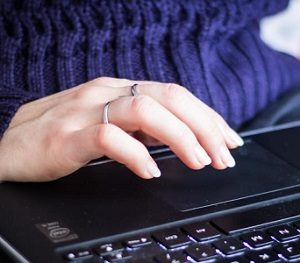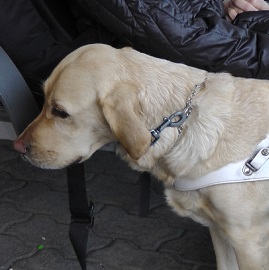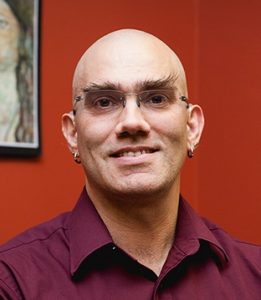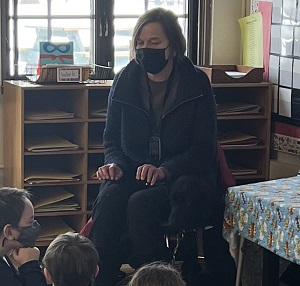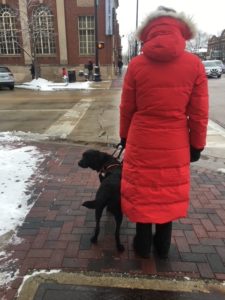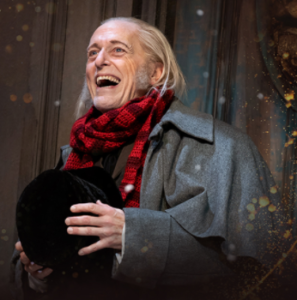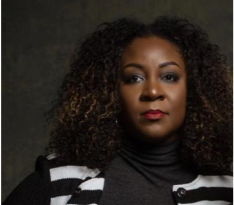Airport Anxiety: The Importance of Transportation Options for People with Disabilities
by Alicia Krage
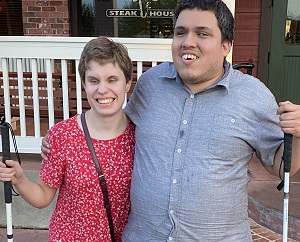
We are standing outside the restaurant. I’m wearing a sundress and he’s wearing a dress shirt with dress pants and dress shoes. We are standing side-by-side with an arm around each other and smiling. It was taken after dinner for our two year anniversary.
If you’ve read my posts here on the Easterseals National blog, you know that I love sharing travel stories, especially new experiences. It feels good to step out of my comfort zone, do something different, and have it go well enough to actually want to write about it.
Such is the case this time.
I spent the month of April in Houston visiting my boyfriend Juan. We’ve been in a long-distance relationship for two years now, and a 4-part series here describes how we’ve managed to keep that relationship going strong for so long.
We typically take turns flying, but I’ve been traveling a bit more than him lately. Last winter, I flew to Houston to get away from Chicago weather and celebrate the holidays with Juan, and then I flew in April to spend a month to explore a new city to see if I could picture starting a new life there. We only see each other in-person about four times a year, and transitioning from a long distance relationship to living together is a huge step. We wanted to make sure we could live under the same roof.
I flew back to Chicago in early May, and this time rather than having someone from Juan’s family drive me to the airport, I ended up taking their paratransit service MetroLift to the airport.
Paratransit is a door-to-door service offered to people with disabilities, an alternative to taking the fixed route buses. The service area — that is, the areas of town in which paratransit will provide service to disabled passengers — is much wider in Houston than the service area covered by paratransit in Chicago, where I live now. I was a little nervous taking paratransit, but I definitely felt more comfortable taking MetroLift than I did taking Uber.
The thing is, I’m an anxious traveler by nature. Part of that is just anxiety in itself, and part of that does stem from my blindness — the constant and extra planning that goes into traveling as a blind person, needing extra assistance, and worrying about being forgotten. I am not relaxed until I am safe and sound at the gate, because in my mind, anything can go wrong before that.
I prepare mentally for what could go wrong and create a backup plan in case it does. Juan knows this about me. He is blind too, and he knows that if plan A gets derailed without a backup plan, I’ll obsess over it and start to panic. When we have to make alternative plans, he’s good about planning it all out.
So when he told me his family was going to be away in Austin (where his sister lives) for Mother’s Day weekend, I started to get nervous. Who’d drive me to the Houston airport, then? Juan calmly presented plan B in meticulous detail, and I felt okay right away.
The plan was to take MetroLift to the airport and get there early. He schedules his rides based on appointment time (that is, what time he wants to arrive) rather than pickup times, because if you schedule by appointment time, even if they have to pick you up early due to other pickups and drop-offs, you’ll still arrive when you want to arrive.
Juan also assured me he’d be coming along on my ride to the airport. He said MetroLift drivers have to hand you off to an employee, so they wouldn’t just drop us off and leave us like an Uber driver might.
So, despite the bittersweet feeling of saying goodbye after spending a whole month together, when departure day arrived, I found myself actually getting excited rather than feeling nervous. I didn’t want his mom to miss most of Mother’s Day weekend, and this seemed like it would go smoothly enough. When Juan called to verify what time our ride was coming to his apartment, he also double checked that they’d walk us into the airport. I overheard him talking to dispatch: “We’ve never done this before,” he said. “So I want to make sure my girlfriend gets assistance — she’s blind, too.”
He made sure they knew we’d both have our white canes with us. They ask this anytime you book a trip anyway, but in this case he told them so they would know who to look for when they arrived at his apartment to pick us up. “I don’t want her just stranded there at the airport ,” he said. “I want to make sure the driver is going to lead us inside.”
The call was on speaker, so I could hear the friendly dispatcher’s voice assuring Juan that yes, the driver would walk us inside, and kindly describing the process of airport drop-offs.
With my trip to the airport booked, Juan scheduled his ride back from the airport for one hour later. That way he could come inside and wait with me. We had scheduled the appointment time early enough that even as our driver took a while to figure out where to park to lead us inside (she herself had never done an airport drop-off before), I wasn’t nervous. Our driver was determined to figure it out, and we had plenty of time.
When she found where to park, she led us inside, where an employee saw us and said he’d take us to the check-in counter. After I told him I was the only one traveling, Juan added, “I’m just going to wait with her to make sure she gets help to security, and then I’ll need some assistance downstairs to catch MetroLift.”
The employees were very patient and accommodating as they led us to the counter and the driver departed. After checking in my suitcase, an airline employee handed me my boarding pass and placed me in a wheelchair to wait for assistance. Being placed in a wheelchair doesn’t bother me even though I don’t need one. It’s pretty common practice in airports and I know it bothers some people. However, it really does make the overall process of getting through security a lot faster. Then there’s this: it makes me more visible and serves as a constant reminder to them that, “Hey, I’m here and I need some assistance!” I only needed to wait about 15 minutes before someone came to assist me. “I’m going to take her to security,” she told Juan. “And sir, someone is already on their way to take you downstairs to catch MetroLift.”
He thanked her for assisting me and for accommodating him as well, telling me to text him once I’ve made it to the gate. We said goodbye, and I was on my way to security.
I ended up having about an hour and a half to kill at the gate, which didn’t bother me. I felt very relieved that the trip went so smoothly. It was definitely a new experience and something I would do again for sure.
For more about paratransit and transportation services in your local area, visit Easterseals.







